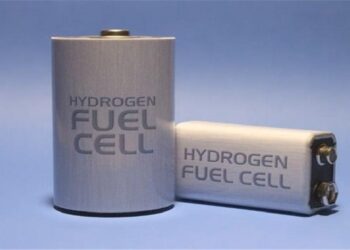The government hopes to encourage innovative renewable energy and energy efficient projects with $4 billion in loan guarantees targeted at grid integration, energy storage, bioenergy and efficiency.
In an effort to seek out and give financial help to innovative technologies that reduce energy use and encourage the uptake of renewable energy, the U.S. government last week announced that it was making $4 billion available in loan guarantees. The money, which is provided by the Loan Program Office (LPO), is for innovative renewable energy and energy efficiency projects located in the U.S. that avoid, reduce, or sequester greenhouse gases.
The LPO said that the solicitation is intended to support technologies that are catalytic, replicable, and market-ready and that it is looking to support specific technologies, even though any project that meets the criteria is welcome to apply.
The five key technologies that the LPO seeks are:
Advanced Grid Integration & Storage: This area focuses on renewable energy systems that mitigate issues related to variability, dispatchability, congestion, and control by incorporating technologies such as demand response or local storage. These advanced system designs will demonstrate greater grid compatibility of generation from renewable resources and open up an even larger role for renewable power generation.
Drop-In Biofuels: This area focuses on biofuels that are more compatible with today’s engines, delivery infrastructure and refueling station equipment. These projects take advantage of existing infrastructure by providing nearly identical bio-based substitutes for crude oil, gasoline, diesel fuel, and jet fuel, or produce intermediate fuel feedstocks that can be delivered to and integrated into existing oil petroleum refineries.
Waste-to-Energy: This area focuses on projects harnessing waste products such as landfill methane and segregated waste as a source of energy. These types of projects will enable commercial scale utilization of waste materials that are otherwise discarded and produce significant clean, renewable energy.
Enhancement of Existing Facilities: This area focuses on projects incorporating renewable generation technology into existing renewable energy and efficient energy facilities to significantly enhance performance or extend the lifetime of the generating asset. This includes micro-hydro or hydro updates to existing non-powered dams.
Efficiency Improvements: This area focuses on projects that incorporate new or improved technologies to further improve on energy efficiency that would substantially reduce greenhouse gases.
During the 30-day public comment period, the Department held six public meetings around the country and accepted written comments online. The solicitation issued today addresses many of those comments and the full public comment record is available online.
“As the President emphasized in his Climate Action Plan, it is critical that we take an all-of-the above approach to energy in order to cut carbon pollution, help address the effects of climate change and protect our children’s future,” said Secretary Ernest Moniz. “Investments in clean, low-carbon energy also provide an economic opportunity. Through previous loan guarantees and other investments, the Department is already helping launch or jumpstart entire industries in the U.S., from utility-scale wind and solar to nuclear and lower-carbon fossil energy. Today’s announcement will help build on and accelerate that success.”
With today’s announcement, the Department’s Loan Programs Office (LPO) is now accepting applications in three areas, which also include the $8 billion Advanced Fossil Energy Projects solicitation that was released in December 2013 and the $16 billion Advanced Technology Vehicle Manufacturing (ATVM) loan program.
Currently, the LPO supports a diverse portfolio of more than $30 billion in loans, loan guarantees, and commitments, supporting more than 30 projects nationwide. The projects that LPO has supported include one of the world’s largest wind farms; several of the world’s largest solar generation and thermal energy storage systems; and more than a dozen new or retooled auto manufacturing plants across the country






































